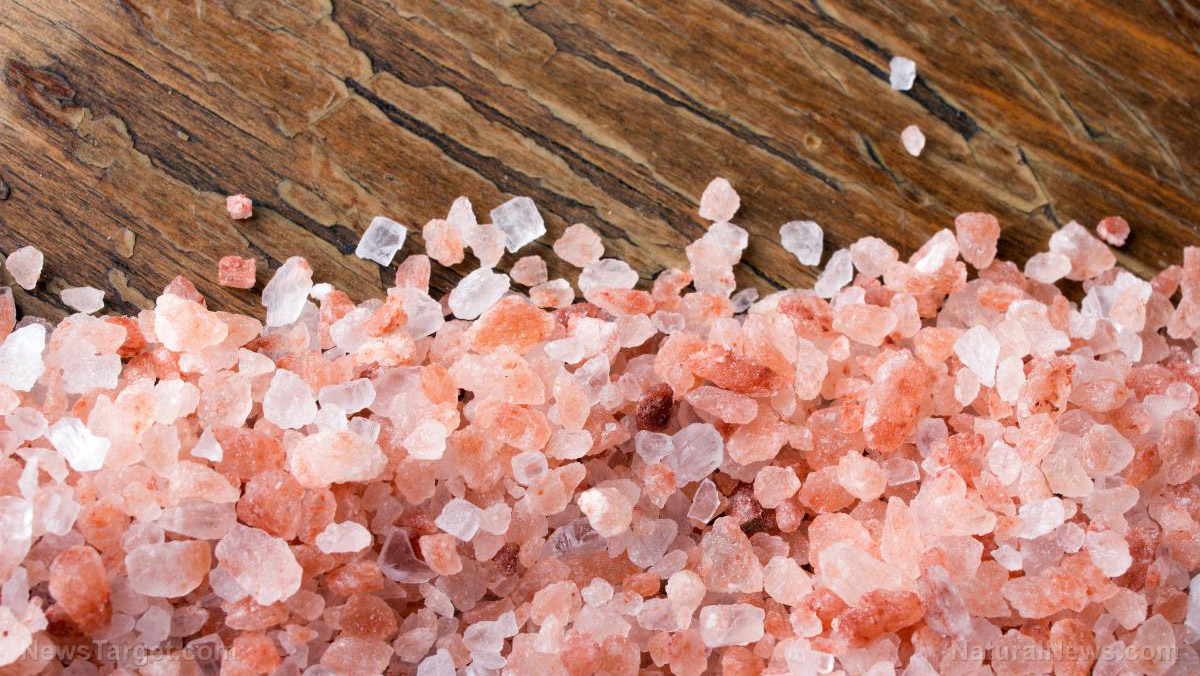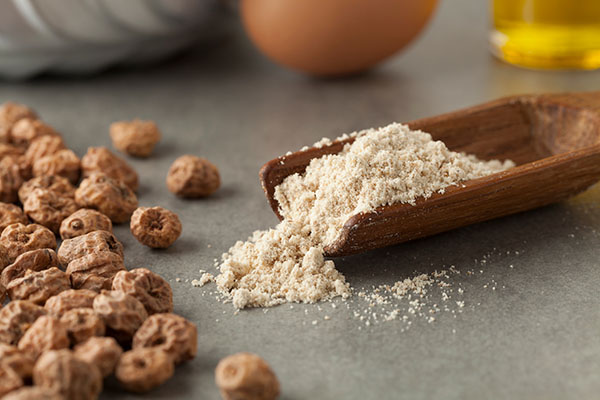
Advertisement
If you’re an avid reader of health articles, you may have an ambivalent relationship with salt by now. Sometimes, we tend to villainize certain foods or ingredients because we’ve read a lot of bad things about them and very little good. Just look at what happened to fats. For decades, we tried to excise them from our diets, thinking they do nothing for our bodies except make us fat. But then came the surge of studies proving how important they are and how not all fats are created equal.
Well, here we are again with salt. Because of the abundance of studies linking salt to heart and kidney disease, these health problems are the first things we usually associate with salt. But salt isn’t inherently bad, and having salt in your food isn’t automatically going to be bad for your health. Salt, or rather the elements that make up salt, play significant roles inside our bodies, so we need these salt components just as much as we need other micronutrients. The only thing that makes salt bad for our health is if we put too much of it in our food.
What happens when we have too much salt in our diet?
While some people enjoy salty food, there’s a limit to how much sodium (Na) and chloride (Cl) — in chemistry, table salt is NaCl — we can have circulating in our bloodstream. Both sodium and chloride are electrolytes in the blood that help keep the amount of fluid inside and outside of our cells balanced. If we eat too much salt, it will mess up this equilibrium and necessitate laborious adjustments, beginning at the molecular level.
Cells naturally contain water in them, but the amount of water they have is dictated by the amount of salt in their environment. For instance, if the salt concentration is higher inside cells, then water from outside will cross the cell membrane to combine with salt, making cells swell. If the salt concentration is higher outside, water will naturally gravitate toward salt and leave the cells, causing them to shrink or wilt. This is why salt water can cause plants to die and why drinking seawater can cause dehydration in humans.
So what’s the heart and kidney connection? It’s this: Our kidneys’ job is to filter our blood and remove excess water from our bodies. To do so, they require a balance of sodium and potassium to pull water from our bloodstream into a collecting channel in our kidneys. But if we eat a high-salt diet, the balance between sodium and potassium will be disrupted, and this will cause our kidneys to function less optimally. With reduced function, our bodies will retain excess water, which will cause our blood pressure to rise. So not only does a high-salt diet cause kidney disease, it also increases our chance of developing heart disease.
What do we need salt for and how much is the right amount?
Our body needs just the right amount of salt to maintain fluid balance and support the functions of our muscles and nerves. Together with other electrolytes, sodium from salt helps control muscle contractions by triggering nerve impulses.
When there’s not enough sodium in our blood, nerve signals become erratic, resulting in painful cramps. Studies have, in fact, linked low sodium levels not only to muscle cramps but also to dehydration and organ failure. Hyponatremia is the medical term for abnormally low blood sodium levels, and this condition is accompanied by dizziness, headaches, confusion, muscle twitches, seizures and a decreased ability to think.
Abnormally high sodium levels, on the other hand, is called hypernatremia. Common symptoms of this condition include a strong feeling of thirst, weakness and confusion. Severe cases of hypernatremia can lead to spasms, seizures and even coma. Other health issues linked to high sodium levels in the blood include kidney stones, high blood pressure and cardiovascular disease.
Here are some more things you need to know about sodium and salt:
- Sodium makes up about 40 percent of table salt.
- Studies show that Americans consume about 3,400 milligrams (mg) of sodium from their diet every day.
- According to the latest Dietary Guidelines for Americans, adults need no more than 2,300 mg of sodium from their diet per day. That is equivalent to one teaspoon of salt.
- For a healthy heart, the American Heart Association recommends limiting your sodium intake to no more than 1,500 mg per day.
A healthy alternative to table salt
Different types of salt can be used in the kitchen. The most common type is table salt, which usually comes from underground salt deposits and goes through a lot of processing. This is to ensure that the end-product doesn’t contain any minerals in it. Manufacturers also add additives to table salt to prevent them from clumping.
In contrast, sea salt and rock salt undergo considerably less processing than table salt. Sea salt is formed by evaporating saltwater collected from lakes or the ocean. It is mostly left unrefined and, as a result, contains certain trace minerals, depending on where the saltwater came from. Meanwhile, rock salt, also known as halite, can be found in solid form in Nature and is mined as such.
But while these types of salt are considered healthy alternatives to refined table salt, there is an even healthier option that most chefs prefer using. Himalayan salt, also known as pink salt, comes from natural deposits found in the Himalayan foothills as well as in the Punjab region in Pakistan. Unlike refined table salt, Himalayan salt naturally contains iodine as well as iron oxide, which is responsible for the salt’s distinct pink color. Aside from being mined and washed by hand, Himalayan salt doesn’t go through any other processing, making it the purest salt on earth.
Himalayan salt crystals contain not just sodium, but also essential minerals like potassium, calcium and magnesium. It also offers the following benefits:
- Helps flush out toxins — You can use Himalayan salt to make sole water, which is exceptionally good for detoxifying. Just fill a quarter of a jug with Himalayan salt, add clean water and let the salt dissolve overnight. Mix a teaspoon of this mixture with a glass of water and drink it every morning to balance your pH levels, eliminate toxins and improve your energy levels!
- Helps regulate blood sugar — Seasoning your food with Himalayan salt can help you maintain not just fluid balance, but also healthy blood sugar levels. Himalayan salt contains four minerals that are key factors in normalizing blood sugar levels. These minerals are chromium, vanadium, manganese and magnesium.
- Helps improve digestion — Himalayan salt helps activate your salivary glands and prompts them to release amylase, an enzyme that helps break down carbohydrates. In the stomach, Himalayan salt also stimulates hydrochloric acid and an enzyme that further aids in digestion.
- Helps treat respiratory problems — Himalayan salt has antimicrobial properties, which make it the perfect salt to use for salt therapy. This natural therapy is effective for cleansing the entire respiratory system of disease-causing microbes. Salt therapy with Himalayan salt is also great for treating seasonal allergies and relieving chest congestion.
- Helps rejuvenate the skin and relieve sore muscles — With its abundance of minerals, Himalayan salt can help boost your skin health. Chromium, zinc and sulfur not only help fight acne, but they also keep the skin smooth and prevent scarring. Meanwhile, magnesium helps soothe cramped muscles. For a refreshing and energizing bath soak, add a small amount of Himalayan salt to your bathwater.
- Helps purify the air — You’re probably familiar with Himalayan salt lamps and what they do. If not, Himalayan salt lamps are used not only to light up dark corners but also to purify the air. These lamps can attract moisture from the air and make it evaporate. Simultaneously, Himalayan salt lamps release negative ions that neutralize airborne allergens like dust, dirt and other pollutants. As a result, you’re left with nothing but safe and purified air to breathe in.
Himalayan salt is the healthiest and most versatile salt on the planet. When used for cooking or seasoning meats, this unique salt can bring out the flavor of foods and boost your nutrient intake with its wide array of essential and health-promoting minerals. Himalayan salt can also be used for other purposes, including as a bath salt to nourish your skin or as an air purifier for your salt lamp. You can even use Himalayan salt to cleanse your lungs and sinuses and get rid of congestion in your chest. With its variety of uses, Himalayan salt is surely a great addition not just in your pantry but also in your medicine cabinet.
Sources:
Advertisements







